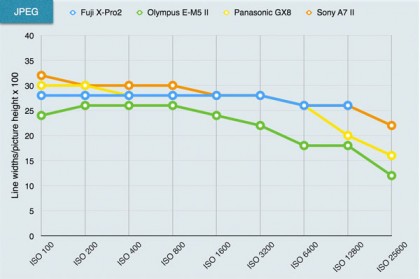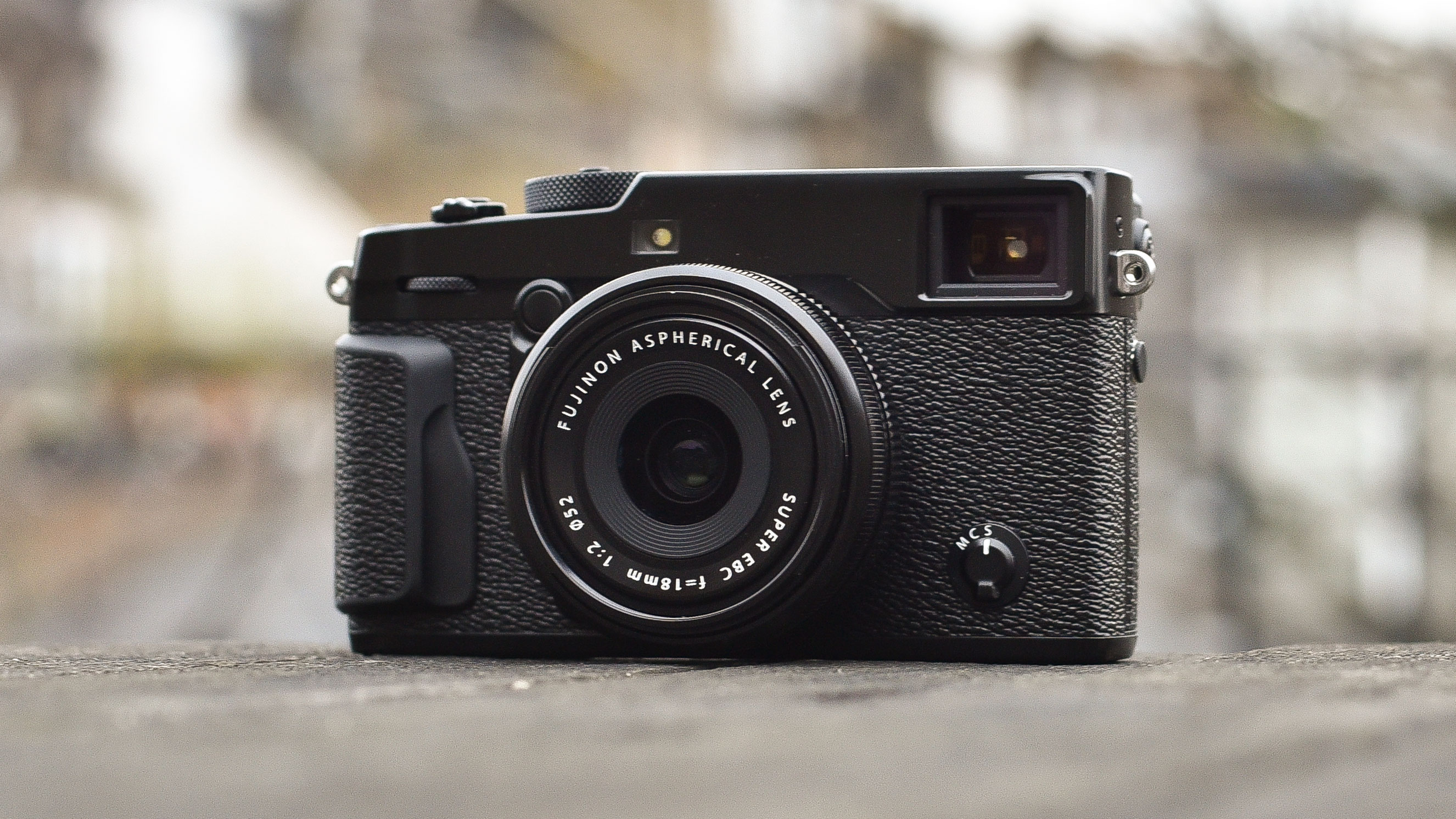Why you can trust TechRadar
We use an industry-standard resolution test chart to check camera performance. This yields resolution figures in line widths/picture height, a measurement now widely used across the camera industry. We also compare the results against our database of previous camera tests to see how each camera compares against its nearest rivals.
For the Fuji X-Pro2 comparison, we've chosen the following cameras:
Olympus OM-D E-M5 II: The Olympus may use a smaller Micro Four Thirds sensor than the X-Pro2, but it impressed us with its performance, features and appealing retro design.
Panasonic GX8: Panasonic's flagship mirrorless camera uses a classic 'rangefinder' design, just like the X-Pro2, and has a brand new 20Mp Micro Four Thirds sensor.
Sony A7 II: The A7 II has a full frame sensor twice the physical size of the one in the X-Pro2 but the same resolution. It's a similar price and pitched at a similar user level.

JPEG resolution analysis: The X-Pro2 lags slightly behind the full frame Sony A7 II at low and medium ISO settings but matches it higher up the ISO range. Its resolution is remarkably consistent across the sensitivity range. Interestingly, the new sensor in the Panasonic GX8 can match the Fuji for resolution.

Raw (converted to TIFF) resolution analysis: This pattern is repeated with raw files. The X-Pro2 is narrowly beaten by the Sony A7 II but, again, delivers remarkably consistent resolution across the sensitivity range.
Sign up for breaking news, reviews, opinion, top tech deals, and more.
Current page: Lab tests: resolution
Prev Page Colour rendition, noise and video Next Page Lab tests: Dynamic range